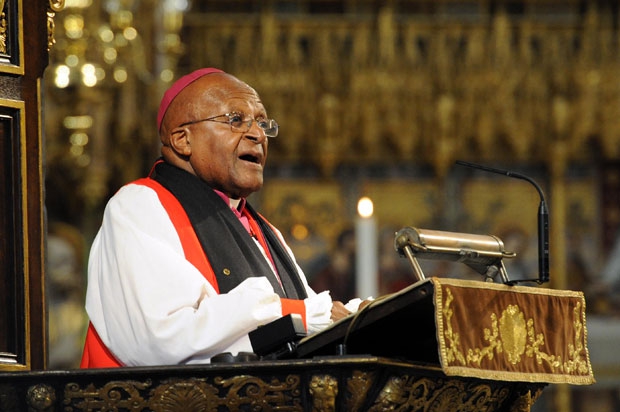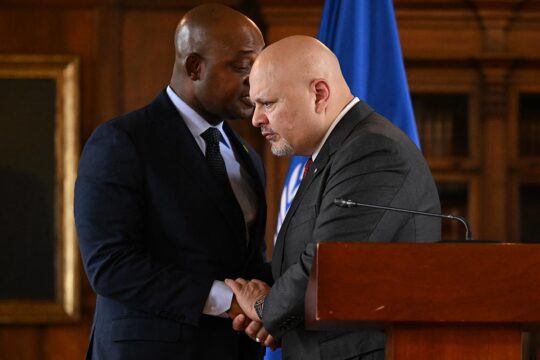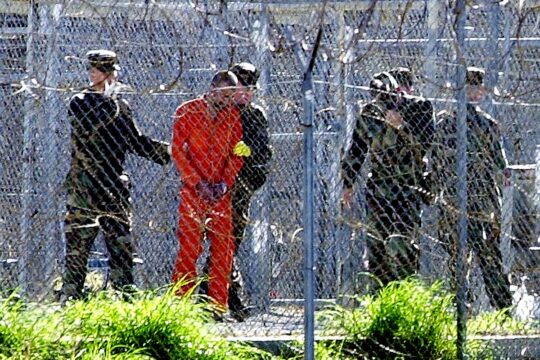Recent vandalism in Jewish cemeteries in St. Louis and Philadelphia illustrates the all too real problem of hate crime faced by many communities in the United States.
Just this February, the Southern Poverty Law Center found that for the second year in a row the number of hate groups in the United States has been growing – up from 892 in 2015 to 900 in 2017. The report also found since the election of President Donald Trump there has been a sharp increase in hate crime incidents.
These incidents beg the question: How can such racial divisions be healed? I study U.S.-based truth commissions and the field of transitional justice. Transitional justice refers to judicial and nonjudicial measures implemented by countries to redress large-scale human rights abuses, such as truth commissions.
Several communities in the United States have attempted to confront racism through truth and reconciliation commissions. My work suggests these commissions have indeed helped promote racial healing and understanding.
Truth and reconciliation movements
It was in 1994 that South Africa set up the first Truth and Reconciliation Commission. Since then dozens of countries including Guatemala and Peru have engaged in truth and reconciliation work.
Truth commissions focus on addressing inequality and attempt to heal divisions in societies that have histories and legacies of violence and inequality. For example, in South Africa, the commission focused on the actions of the government and the groups fighting it under apartheid.
A common theme of truth commissions lies in rewriting a nation’s history to provide a history of events that honors and respects survivors and provides citizens an understanding of how violence took place and who was responsible for human rights violations. In Guatemala, for example, this meant writing a history that outlined the role of the government institutions in human rights abuses during Guatemala’s 36 years of military rule, when there were widespread human rights abuses.
The International Center for Transitional Justice, a nonprofit that promotes transitional justice initiatives such as truth commissions, explains that “public understandings of past abuses” is important. Often the historical record is written in such a way that it ignores or justifies past human rights abuses.
By documenting the history and legacy of abuse, truth commissions can provide closure for victims and help communities create institutions to address the underlying causes of violence.
US-based truth commissions
Most international truth commissions work through the government or organizations like the United Nations. U.S. truth commissions, however, are different. They are the result of local organizers who are not affiliated with government organizations.
As a result, they often attempt to build the truth from the bottom up. What this means is that U.S.-based truth commissions work to empower local citizens to write histories and come to a broader understanding of the role of race and racism in inequality in local communities.
The development of U.S.-based truth commissions can be traced back to two efforts at racial reconciliation that were begun in the mid-1990s.
The first such program was started at the University of Mississippi in 1997. It was done in conjunction with then-President Bill Clinton’s “One America” initiative aimed at encouraging community dialogue to address racial and ethnic divisions.
The Mississippi commission was started by then Mississippi Governor William Winter to take advantage of Bill Clinton’s One America initiative. A series of conversations were started with a diverse group of Mississippians to address racial violence related to the U.S. civil rights movement and the killing of civil rights workers in Mississippi. These conversations are ongoing and promote dialogue on race and racism in the state.
Greensboro TRC
The other key milestone was the setting up of the first formal truth commission in the U.S., in Greensboro, North Carolina in 1999. The Greensboro TRC was focused on the murder of labor organizers by the Ku Klux Klan and American Nazi Party in 1979.
On Nov. 3, 1979, 40 Ku Klux Klan men and American Nazis ambushed an anti-Klan demonstration in Greensboro and attacked the group with firearms. Five people were killed.
Despite the fact that local news crews recorded the shooting and it was clearly visible who fired the shots, no one was convicted. In two state criminal trials, the Klan and Nazis were found not guilty after claiming self-defense.
Twenty years later, a group of local activists and survivors began advocating for a truth process as a way to understand the events and heal the divisions in the community.
There were contradictory interpretations of the events and mistrust among the local African-American and white communities that made dealing with racism in Greensboro difficult.
In 2000, the Greensboro TRC secured private foundation funding and began taking testimonies from the impacted communities. This included reaching out to former and current Klan members as well as to survivors and local government officials. In some cases the former Klan and Nazis apologized for their actions, while others remained unrepentant.
Importantly, this was the first time community members and those affected by the killings could publicly talk about the impact the events had on their lives and the lives of their loved ones.
On May 25, 2006 the Greensboro Truth Commission released its final report to the City of Greensboro.
Expanding US truth efforts
Since the release of the Greensboro TRC report, several efforts have been undertaken in Greensboro to promote community reconciliation and address longstanding inequality in the community.
These included investigations into discrimination in the Greensboro Police Department and the installation of a memorial that documents the events.
The memorial installation provides a space for survivors to gather to commemorate the events. It has also created space for the broader community to reflect on the lives that were impacted by the shootings.
These memorial and police investigation are concrete examples of the way Greensboro has tried to come to terms with the Nov. 3, 1979 killing.
Why does this matter?
The Greensboro TRC’s biggest impact, however, is that the process inspired other communities to begin their own reconciliation work. Since Greensboro, I know of six other communities that are working on TRCs or have completed TRC projects.
These projects are varied: One has looked at legacies of racism in the Boston Public School system, another has investigated the abuse of native children by child welfare agencies in Maine and a third has begun to look at legacies of segregation in the metro Detroit area.
More such efforts are being planned. The Kellogg Foundation, for example, has announced that they will focus on community reconciliation projects and are funding projects that are focused on community racial healing.
While truth commissions cannot address every form of racism in the United States, I believe that these efforts are an important milestone in U.S. racial politics. The TRCs can provide important moments for communities to engage in a real dialogue and to come up with concrete solutions to address racism – something that is clearly needed in a nation beset by continued racial violence and hate crimes.
Joshua F.J. Inwood, Associate Professor of Geography Senior Research Associate in the Rock Ethics Institute, Pennsylvania State University
La version originale de cet article a été publiée sur The Conversation.





